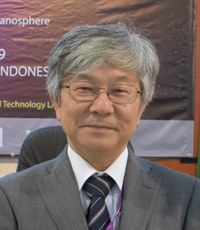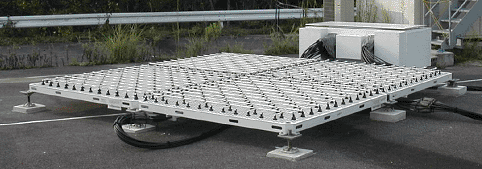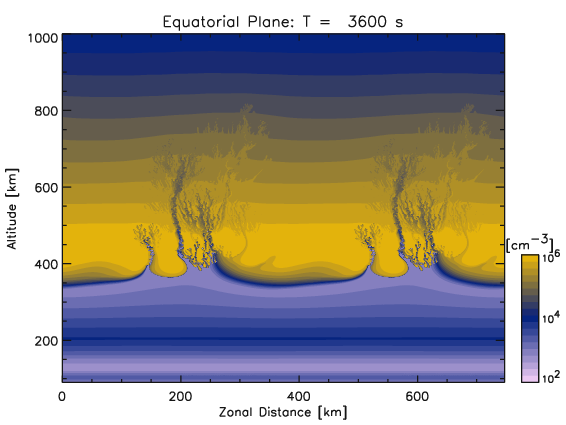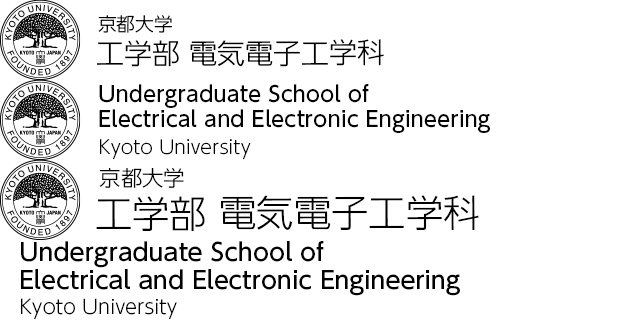Remote Sensing Engineering (Radar Atmospheric Science/Yamamoto Lab)
The Radar Atmospheric Science Lab aims to elucidate various phenomena observed in the earth's atmosphere, through the development of remote sensing techniques of the atmosphere using radio waves. The key aspects of this endeavor are "atmosphere" and "radar". The features of our lab are summarized below.
- We are pursuing the development of radar technology for measuring various atmospheric phenomena (e.g., turbulence, rain, clouds, electromagnetic processes) using radio wave whose wavelength ranges from several meters to millimeters.
- We are working on R&D focused on atmospheric phenomena that occur over a wide altitude range—from phenomena that occur near the earth's surface and hence are directly related to human activities, to phenomena that occur at altitudes higher than 100 km, which is the boundary between the earth's atmosphere and space (i.e., the ionosphere).
- We are striving to understand not just the atmosphere above Japan, but also, through international cooperation, atmospheric phenomena that occur above the equatorial region. In addition to an atmospheric radar located on the Indonesian island of Sumatra (Equatorial Atmosphere Radar, EAR), we are building an observation network of small-sized radars in Indonesia in collaboration with other research institutes, in order to understand atmospheric phenomena over Indonesia—in particular the phenomena related to deep cumulus convection, which is more prevalent there than anywhere else.
Academic Staff
Mamoru YAMAMOTO
 Professor (Research Institute for Sustainable Humanosphere)
Professor (Research Institute for Sustainable Humanosphere)
Research Interests
Contacts
TEL: +81-774-38-3814
FAX: +81-774-31-8463
E-mail: yamamoto (at) rish.kyoto-u.ac.jp
Tatsuhiro YOKOYAMA
Associate Professor (Research Institute for Sustainable Humanosphere)
Research Interests
Contacts
TEL: +81-774-38-3810
FAX: +81-774-31-8463
E-mail: yokoyama (at) rish.kyoto-u.ac.jp
Introduction to R&D Topics
Development of radars for remote sensing of the atmosphere
We are developing radar technology to measure various atmospheric phenomena (e.g., turbulence, rain, clouds, electromagnetic processes) using radio wave whose wavelength ranges from several meters to millimeters.
In addition to large-sized VHF-band radars (e.g., the MU radar and EAR) equipped with an antenna whose diameters larger than 100 m and are capable of measuring atmospheric phenomena occurring at altitudes ranging from close to the earth's surface to several hundred kilometers, we have also developed millimeter-wave radars for observing fog and cloud particles. In addition, we have developed a lower troposphere radar (LTR) that is operated with 1.3-GHz frequency (wavelength of approx. 30 cm) for measuring wind velocities up to several kilometers above the surface of the earth (see photo). The LTR is used for operational weather forecasting by the Wind Profiler Network and Data Acquisition System (WINDAS) of Japan meteorological Agency.
Means to observe wind profiles over the ocean are necessary to improve the accuracy of current weather forecasting. We are also developing a shipborne radar to observe wind profiles over the ocean.

Observation of atmospheric phenomena using the MU radar
The MU radar (see photo) is located at Shigaraki in Koga City, Shiga prefecture, and is the largest VHF-band radar in the Asian region.
This radar is capable of measuring wind velocity and turbulence in the troposphere (the troposphere extends from the earth's surface up to altitudes of 10-18 km), where phenomena which occur there (for example, typhoons and fronts) are closely related to human activities. The radar is also capable of observing behaviors of electrons in the ionosphere at altitudes higher than 100 km. This radar, equipped with highly advanced hardware and software, is unique—it features 475 independently controllable antennas positioned within a 103-m-diameter circle, and is able to transmit at multiple frequencies simultaneously.
The MU radar was dedicated as an IEEE milestone in 2015. IEEE established the Milestones Program in 1983 to recognize the achievements of the Century of Giants which formed the profession and the technologies represented by IEEE. Each milestone recognizes a significant technical achievement that occurred at least 25 years ago in an area of technology represented by IEEE and having at least regional impacts.
This lab is using the advanced capabilities of the MU radar to develop remote sensing techniques of the atmosphere and is applying the techniques developed to understand atmospheric phenomena. Many of our studies involve cooperation between researchers not only from Japan but also from various other countries.
The Shigaraki MU Observatory is used for observations not only using the equipments operated by Kyoto University, but also using various equipments operated by other universities and research institutes. The observatory is also equipped with well-developed accommodation facilities and Internet systems. Staff and students from our lab travel to the Shigaraki MU Observatory for on-site observations together with researchers and students from other universities and research institutes.

Atmospheric phenomena in the ionosphere
The upper atmosphere above 100 km altitude is partially ionized and called ionosphere. Radiowave propagation is influenced by plasma in the ionosphere and may cause severe outage of satellite communication and navigation such as GPS. On the other hand, atmospheric gravity waves, which are produced by topography, cumulus activity and others. propagate from the lower layers of the earth's atmosphere and have a significant influence on the behavior of electromagnetic phenomena in the ionosphere. We are currently carrying out research to understand the relationship between atmospheric gravity waves and electromagnetic phenomena by combining in-situ observations by satellites and rockets with remote observations by radars. We are also developing numerical simulation models to reproduce and forecast ionospheric disturbances and to understand radio propagation in the ionosphere (see image below: electron density variation of equatorial plasma bubbles).

Atmospheric phenomena in the tropical region
Indonesia in the tropical region comprises a large number of islands surrounded by warm seas and is blessed with high levels of solar radiation. Consequently, activity of cumulus convection is strong, and the energy transportation in the atmosphere caused by this convection drives the global circulation of the earth's atmosphere.
Our lab developed a large-sized VHF-band radar (Equatorial Atmosphere Radar, EAR; see photo) located at Sumatra island, and in cooperation with the Indonesian National Institute of Aeronautics and Space (LAPAN), we are conducting continuous monitoring of the tropical atmosphere. By utilizing substantial observational capabilities that can only be realized using large-sized radars and many other equipments installed at the radar site, we are working on understanding atmospheric phenomena such as the electromagnetic phenomenon in the ionosphere known as plasma bubbles and organization and energy transportations mechanisms of cumulus convection in the troposphere. Recently, we are collaborating with various countries such as Thailand, Vietnam, India, and China to develop comprehensive observation network in Southeast Asian region.
Our research is conducted jointly with researchers from Indonesia and various other countries. In addition to academic staff and researchers, many students also participate in observations in Indonesia and other countries that help them have unique international experience.

